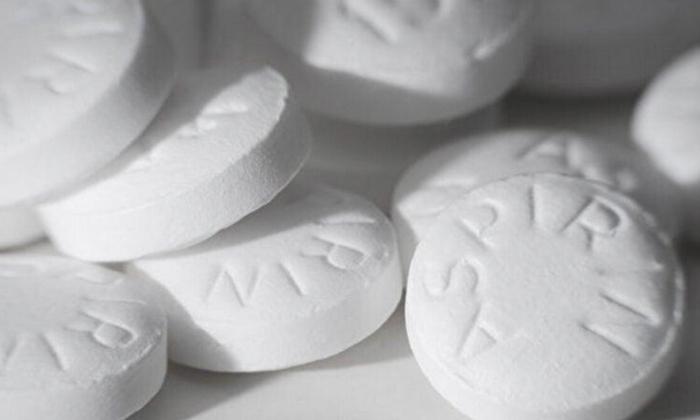The People’s Bank of China (PBOC) recently published that the amount of private financing declined in December 2022, which is lower than market predictions.
Personal loans continued to slump while individual deposits exceeded 80 percent year over year. The growth curves of both categories of money supply M1 and money supply M2 have shown a downward trend, so there is a growing discrepancy between M1 and M2, as the price scissors indicated.
Investment and Consumption Fall
On Jan. 10, the PBOC released a series of reports, including the Financial Statistics Report (2022), Report on Aggregate Financing to the Real Economy (Flow) (2022), and Report on Aggregate Financing to the Real Economy (Stock) (2022), according to which the balance of broad money supply (M2) was 266.43 trillion yuan (about $39.34 trillion). It has grown at the rate of 11.8 percent year over year.The balance of the narrow money supply (M1) was 67.17 trillion yuan (about $9.92 trillion), with a growth rate of 3.7 percent. The amount of currency in circulation (M0) was 10.47 trillion yuan (about $1.54 trillion, increasing by 15.3 percent year over year. The year 2022 has seen a net money injection of 1.39 trillion yuan (about $205.3 billion).

The growth of M2 has revealed that there would have been a high potential for financing redemption alongside exponential growth in personal deposits. The lower growth rate of M1 has reflected that real estate sales remained lackluster, which curbed the industrial increment. In addition, the economic vitality was low. Negligible business funds were used for fixed-term investments.
In December 2022, the growth rate of M1 was higher than that of M2. The gap between M2 and M1 price scissors increased by 0.3 percent to 8.1 percent compared with November. As the price scissors indicated, there was a growing discrepancy between M1 and M2. It illustrated that business activities were hindered, cash flow was blocked to some extent, and customer savings increased while expenses decreased. (The scissors difference between the growth rates of M2 and M1 can be used as an observation variable to determine the degree of capital activity.)
In 2021, household loans increased by 7.92 trillion yuan (about $1.17 trillion) in total, short-term loans increased by 1.84 trillion yuan (about $271.8 billion), and medium- and long-term loans increased by 6.08 trillion yuan (about $898.1 billion).
In 2022, household loans increased by 3.83 trillion yuan (about $565.7 billion), short-term loans increased by 1.08 trillion yuan (about $159.5 billion), and medium- and long-term loans increased by 2.75 trillion yuan (about $406.2 billion). Accordingly, newly added household loans dropped by 52 percent, and newly added medium- and long-term loans dropped by 54 percent. It also manifested in the downturn in the real estate market, and considerably fewer people were buying houses via taking out a loan.
In 2021, household deposits reached 9.9 trillion yuan (about $1.46 trillion). It was 17.84 trillion yuan (about $2.64 trillion) in 2022, with an increase of 80.2 percent, which is in stark contrast to the previous year. In 2022, personal deposits nearly doubled while loans decreased by more than half. It has shown that consumer confidence in economic growth fell dramatically, and people are reluctant to invest or consume.
During a speech at the China Financial Security Forum on Dec. 24, 2022, Chinese economist Wei Jianing stated that the long-term slowdown in economic growth had become a significant threat to national economic security. Although China’s State Council held an emergency conference of 100,000 representatives at the end of May 2022, followed by “Six Aspects,” “Thirty-Three Sets of Measures,” and “Plan of Twelve Trillion Yuan Economic Stabilization,” the economist said, “No effect has been seen on economic growth.”

A Decline in Aggregate Private Financing
Based on the official data released by the CCP, the balance of aggregate private financing to the real economy amounted to 344.21 trillion yuan (about $50.8 trillion) at the end of 2022, a year-over-year increase of 9.6 percent. In 2022, the cumulative increase in aggregate private financing reached 32.01 trillion yuan (about $4.73 trillion), which was 668.9 billion yuan (about $98.8 billion) more than the previous year. In December 2022, aggregate private financing increased by 1.31 trillion yuan (about $193.5 billion). The amount was 1.05 trillion yuan (about $155.1 billion) less than that of December 2021 and 680 billion yuan (about $100.4 billion) less than that of November 2022. This denoted that the financing scale had been sliding away.In December 2022, the net financing of corporate bonds saw a sharp decrease of 270.9 billion yuan (about $40 billion), 487.6 billion yuan (about $72 billion) less than that of December 2021. The decline is related to the withdrawal of the net value of financial products—that is, financial products got redeemed and converted into deposits; however, bonds were sold off, which resulted in canceling or terminating new bonds.
In December 2022, the public and private sectors reduced short-term loans by 41.6 billion yuan (about $6.15 billion) but increased medium- and long-term loans by 1.2 trillion yuan (about $177.3 billion), of which most obligors are from real estate. Thus, it has been revealed that official policies have little influence on expanding domestic demand for real estate.
PMI and Non-Manufacturing Business Activity Index Fall
The production and outlook level of the manufacturing industry has dropped from the previous month. According to China’s National Bureau of Statistics (NBS), in December 2022, the purchasing manager index (PMI) was 47.0 percent, one percentage point lower than the previous month and lower than the critical point. Furthermore, the weightings of five subindexes in PMI are all below the critical point:- The weight of the output was 44.6 percent, 3.2 percentage points lower than that of the previous month, indicating that manufacturing output fell.
- The weight of new orders was 43.9 percent, 2.5 percentage points lower than that of the previous month, indicating that the manufacturing market demand decreased.
- The employment weight was 44.8 percent, 2.6 percentage points lower than the previous month, indicating that the manufacturing employment rate declined.
- The weight of stocks of inventories was 47.1 percent, 0.4 percentage points higher than the previous month, indicating that the inventory stock slid away.
- The weight of supplier delivery time was 40.1 percent, 6.6 percentage points lower than that of the previous month, indicating that the delivery time of raw material suppliers was delayed.
Prospect Index of Real Estate Fall to Lowest Level
Based on data released by the NBS on Jan. 17, the net sales area of commercial property in 2022 amounted to 1.358 billion square meters, a year-over-year decrease of 24.3 percent, and the sales volume of commercial property amounted to 13.33 trillion yuan (about $1.97 trillion), a year-over-year decrease of 26.7 percent. The national average of commercial property rate was 10,185 yuan (about $1,501) per square meter, a 2 percent decrease in contrast to that of the previous month.In 2022, the national real estate investment amounted to 13.29 trillion yuan (about $1.96 trillion), a 10 percent drop year over year, which was the first historical decline. The nationwide land area purchased fell by 53.4 percent year over year. The real situation of land acquisition would have been even bleaker if the land acquisition supported by local urban investment platforms were excluded.
The area under construction, the area of the newly started, and the as-constructed all reduced, among which the area of newly started construction decreased by around 40 percent year over year.

In 2022, the investment in real estate amounted to 14.9 trillion yuan (about $2.2 trillion), 25.9 percent lower than the previous year’s. Until December 2022, the prospect index of real estate fell to 94.35 percent, the lowest level in recent times. It indicated that there was little liquidity in the industry.
“The inventory destocking happened in 2015 when the property investment was also under pressure. However, the investment still increased by 1.0 percent at that time. Thus, the housing market has been facing an unprecedented challenge in 2022,” said Li Yujia, the chief researcher of the Center for Housing Policy Studies of Urban and Rural Planning and Design Institute in Guangdong Province, according to the Chinese news portal Sina Finance China.
Cric Research Center released a report on Jan. 2, showing that the overall sales performance of the real estate industry in 2022 dropped up to 39 percent year over year. Into the bargain, real estate investment reached the lowest level in 2022, and nearly 40 percent of the top 100 real estate companies suspended their investment throughout the year.
Analysis: China’s Loose Monetary Policy Fails to Become Easy Credit
From April to December 2022, the M2 money supply kept a higher growth rate than that of aggregate private financing. The M2-aggregate private financing price scissors once triggered heated debate over vigilance against “liquidity traps,” so the transmission mechanism of loose monetary policy was blocked, and easy credit was hindered from becoming easy money.On Jan. 13, Xia Lei, the chief economist of Sealand Securities Co., published an article saying that the growth rate of aggregate private financing had been lower than M2 for nine months until December 2022. The price scissors gap narrowed slightly to 2.2 percent in the month, but it is still at a high level, and the transmission of broad money to wide credit is blocked.
On Jan. 3, at the 2023 Spring Festival Forum organized by the Chongyang Institute for Financial Studies of Renmin University of China, finance expert Chen Fang stated that the monetary situation had been eased in 2022 after two rounds of overall cuts of the reserve requirement ratio in April and November, and two rounds of cuts of the medium-term lending facility in January and August, respectively.
Nevertheless, the current major problem is that easy money cannot boost easy credit due to the continuously widening price-scissors gap between M1 and M2 money supply.





